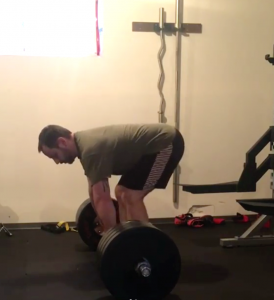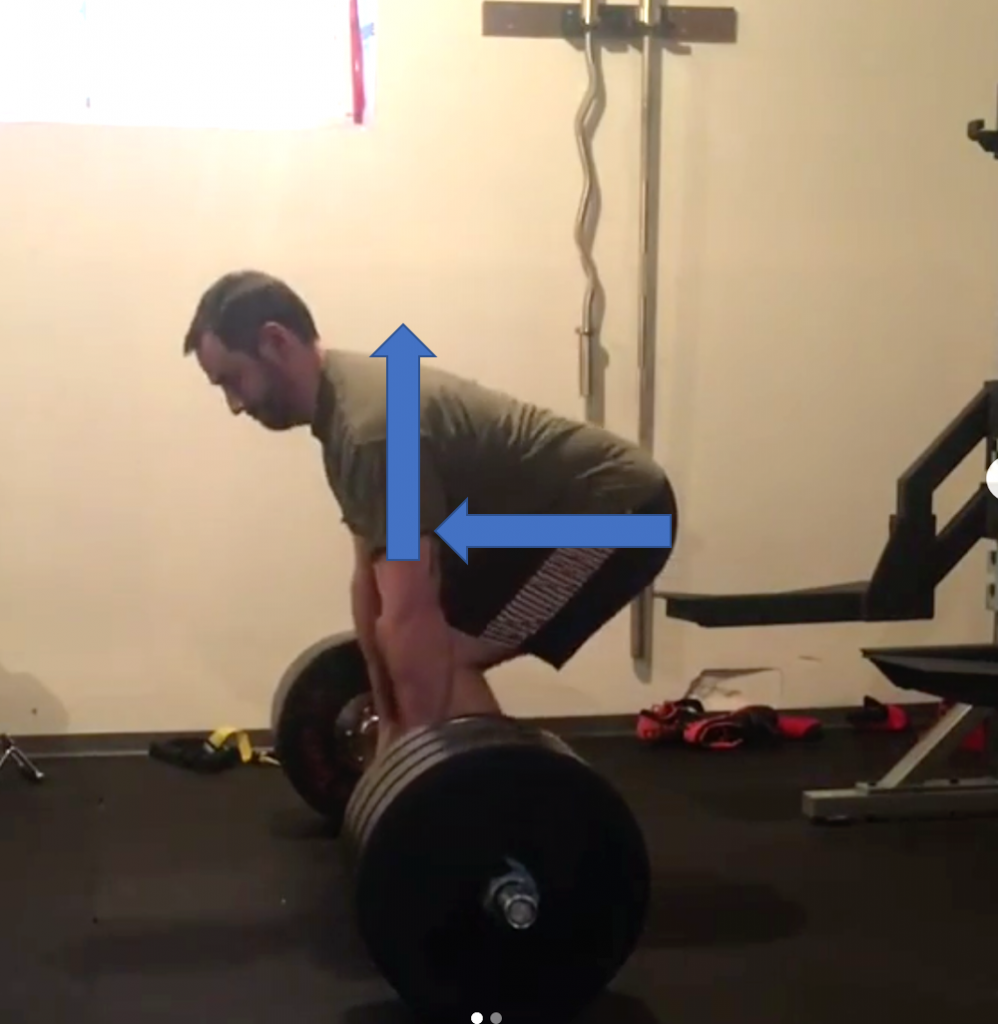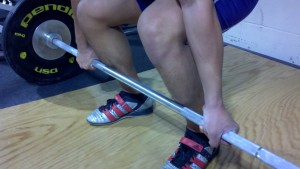Wedging into the Bar For a Stronger Deadlift
One of the big coaching cues I use a lot with my clients when coaching the deadlift is the concept of tension on the bar and less about the actual lift itself. If you consider the primary aim of a deadlift is to have the hips, knees and ankles do the moving to create the vertical motion of the bar, what you may not want to have moving to do the work is the spine, unless you’re an elite powerlifter. For most beginners, they’re not ready to lift with any kind of spinal motion yet, so focusing on tension development to help reduce motion from the spine can be a massive game changer for someone who has no idea how to lift a weight effectively.
Even guys at the elite level work on building more tension into the bar and preventing motion from the spine, as they know it’s going to produce some weakness in the lift if their tonic muscles through the lumbar and thoracic spine are trying to move the heavy weight that should be pushed by the phasic muscles of the hips and thighs.
A common mistake a lot of trainees will fall into when lifting is that lack of tension on the bar, either jerking into it at the bottom or not getting set enough before pulling, and winding up with some form of motion or reduced muscle stabilization through the spine, which could either predispose injury (potential disc bulge-herniation mechanism as well as spondy), reduced muscle force production, or mentally not pushing through the lift due to some fear or guarding. In any situation, you don’t make the lift, you look silly, and no one wants to touch your naughty bits.
Now making tension with the bar can be a little more complicated than simply contracting muscles. One method that works very well is to consider wedging your hips under your shoulders while creating some upward pull on the bar prior to starting the rep. The closer you can get your hips to the bar, the shorter the lever acting on the hips and low back, which makes more of an effective pull versus having that weight farther from the hips and working on a longer torque arm.
By wedging under the bar, you have to develop more tension through not only your hips and hamstrings, but also through the lats, erectors, and core muscles to hold the spine together as the hips are pressing into the bar and pushing the arms up.

A starting position with almost no tension through the spine or core prior to pulling.

A wedged position. The hips are closer to the bar, the shoulders are higher, and the shins are maintaining relatively the same angle. Much more tension.
A good wedge will cause you to feel like you’re trying to hold up a wall so it doesn’t fall on you, but will also cause the bar to pull up into the plates, and likely cause the weights to lift slightly off the floor if the weight is light enough.
Watch Chris Duffin of Kabuki Strength discuss the concept of shooting the hips forward and chest up to wedge under the shoulders and pull up on the bar to get set up for a good pull.
A major technical error a lot of people will run into with this wedge is to consider just pushing their hips forward, but forgetting to pull the chest up and shoulders back. As Ed Coan discusses in this video, the set up is more of a “push-pull,” where you push the hips towards the bar, but also pull the shoulders and chest up away from the bar to put some tension into the bar and start that vertical process.
One way to tell if you’re pushing your hips forward without getting the shoulders back is if you start standing with the shins on the bar, and as you push the hips towards the bar you wind up pushing the bar forward as well, or if your knees wind up coming ahead of the bar, you’re pushing without pulling. Get the head and shoulders back. In other words, if you look down, you should see the bar, not your knee cap.

Image credit: Mikerobertson.com
For many beginners, I’ll work on reps of simply getting tense on the bar, without actually pulling the weight off the floor. Simply getting used to that level of tension can be fatiguing to a lot of people, and can impart a training response, no different than something like a plank or dead bug, but more specific to the tension development that you were working with on a deadlift, and it helps to create that learning situation that can help make the lift more effective for you when you set up and pull versus hoping to get enough tension to move the weight.
This tension development is one of the best ways to separate the novice lifter from the experienced lifter, but one of the most critical component to getting novice lifters to get stronger without risking injury or poor performance.
2 Responses to Wedging into the Bar For a Stronger Deadlift